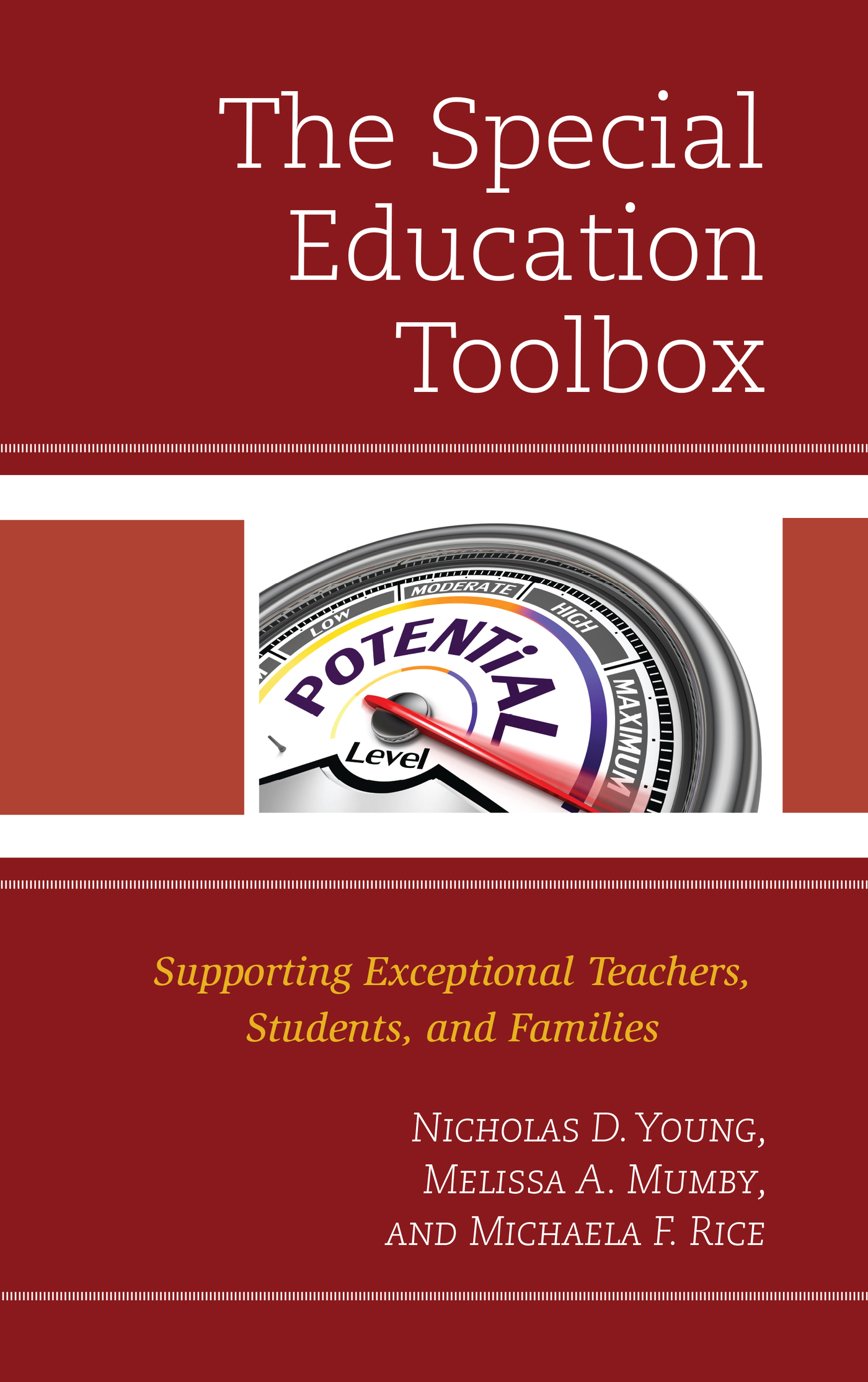The Special Education Toolbox
The Special Education Toolbox
Supporting Exceptional Teachers,
Students, and Families
Nicholas D. Young, Melissa A. Mumby, and Michaela F. Rice
ROWMAN & LITTLEFIELD
Lanham Boulder New York London
Published by Rowman & Littlefield
An imprint of The Rowman & Littlefield Publishing Group, Inc.
4501 Forbes Boulevard, Suite 200, Lanham, Maryland 20706
www.rowman.com
6 Tinworth Street, London SE11 5AL
Copyright 2019 by Nicholas D. Young, Melissa A. Mumby, and Michaela F. Rice
All rights reserved. No part of this book may be reproduced in any form or by any electronic or mechanical means, including information storage and retrieval systems, without written permission from the publisher, except by a reviewer who may quote passages in a review.
British Library Cataloguing in Publication Information Available
Library of Congress Cataloging-in-Publication Data
Names: Young, Nicholas D., 1967- author. | Mumby, Melissa A., 1977- author. | Rice, Michaela, author.
Title: The special education toolbox : supporting exceptional teachers, students, and families / by Nicholas D. Young, Melissa A. Mumby and Michaela Rice.
Description: Lanham : Rowman & Littlefield, [2019] | Includes bibliographical references.
Identifiers: LCCN 2019000815 (print) | LCCN 2019008267 (ebook) | ISBN 9781475847970 (electronic) | ISBN 9781475847956 (cloth : alk. paper) | ISBN 9781475847963 (pbk. : alk. paper)
Subjects: LCSH: Special educationUnited StatesHandbooks, manuals, etc.
Classification: LCC LC3981 (ebook) | LCC LC3981 .Y684 2019 (print) | DDC 371.9dc23
LC record available at https://lccn.loc.gov/2019000815
 TM The paper used in this publication meets the minimum requirements of American National Standard for Information Sciences Permanence of Paper for Printed Library Materials, ANSI/NISO Z39.48-1992.
TM The paper used in this publication meets the minimum requirements of American National Standard for Information Sciences Permanence of Paper for Printed Library Materials, ANSI/NISO Z39.48-1992.
Preface
The Special Education Toolbox: Supporting Exceptional Teachers, Students, and Families was written for school administrators; policymakers; pre
service, novice, and seasoned teachers; paraprofessionals; school psychologists and related service providers; and the families of children who may be entering the special education arena or who have been previously identified with one of the predetermined disabilities as explained by the federal Individuals with Disabilities Education Act (IDEA) (Center for Parent Information & Resources, 2017a). Navigating the world of special education can be both challenging and fulfilling. As disability diagnoses have increased substantially over the past decade, having a solid understanding of the practices, procedures, and legalities surrounding special education services has become increasingly necessary to ensure the success of this population of students and those who are dedicated to working with or on their behalf.
This book aims to provide practical information for both current and aspiring special education teachers, special education related professionals, parents, school administrators and policymakers on topics that are most relevant to engaging and advancing the educational needs of students with disabilities. The emphasis is placed on evidenced-based practices that have been found to be most effective in the provision of top quality special education services.
Our motivation for writing this book comes from several concerns:
Our understanding that, as the number of special education students grows, the educators tasked with supporting them in an inclusion setting may not have the tools to do so.
Our knowledge that a current shortage of special education teachers may cause subpar educational opportunities for our neediest students.
Our belief that all students, especially those who fall within the IDEA disability categories, should receive equal access to academic instruction, which occurs when best practice and research-based strategies are shared.
Our interest in furthering the conversation surrounding special education, explicitly teaching the most important concepts, protocols, and strategies to all staff who engage with students who have exceptionalities.
Our passion in providing equitable outcomes for all students, regardless of disability, so that they can become productive members of their immediate and global community.
To give the reader a solid foundation, this book begins with an introduction to special education that includes the description of each of the thirteen disability categories as specified in the Individuals with Disabilities Act and moves to give a clear understanding of the importance of response to intervention (RTI) as a precursor to support, and examines the individualized education plan (IEP) (IDEA, 2004; Lee, 2018). Subsequent chapters define and describe the least restrictive environment, discuss the importance of paraprofessionals for student necessity of positive home-school connections, and highlight the importance of transition planning, among other relevant special education topics.
This book was written by an experienced team whose members, at one time or another, have been parents, special education teachers, special education administrators, a superintendent, and a college professor. Through their years of service, they have worked to improve the lives of students with a variety of disabilities and exceptionalities within the classroom and the conference room. It is their collective experience that provides the basis for this book, while adding in relevant research and strategies to enhance the base of knowledge. In an age where special education has become more prevalent, and general education teachers are expected to shoulder more of the work, it behooves all educators and families to be prepared to meet these new demands. Even the most seasoned special educators will benefit from a fresh and contemporary examination of the research contained within the pages of this book.
Acknowledgments
We are indebted to Sue Clark for holding this manuscript to a rigorous standard as our highly capable and committed editor. She has been an instrumental part of our writing team through numerous books and her contributions have not gone unnoticed or unappreciated. Sue has had a long and distinguished career in public education in her own right, having long advocated for those who have confronted their own challenges, whether in the classroom or the workplace. While she would not give herself anywhere near the credit she deserves, her advocacy over the years has helped thousands of students and countless peers improve their lives immeasurably. We hope that when she finally retires, she will have the time to reflect on the many positive ways she has made a meaningful impact along the way. And while we hold her in the highest regard as a professional colleague, her gentle, kind, and supportive demeanor also makes her an invaluable friend. Thank you, Sue, for being you.
Chapter 1
The Fundamentals of Special Education
Defining Disabilities and the Federal Laws that Provide Guidance
Special education is specifically designed instruction for students with disabilities. Special education includes the academic, physical, cognitive, and social-emotional instruction offered to students who have one or more disabilities (Bateman & Cline, 2016). Students require special education services or programming when they are not able to have their specific needs met in the general education classroom (Center for Parent Information & Resources, 2017a). Special education services modify or adapt content and teaching methodology to deliver instruction that meets the unique needs of the student (Center for Parent Information & Resources, 2017a).
Next page
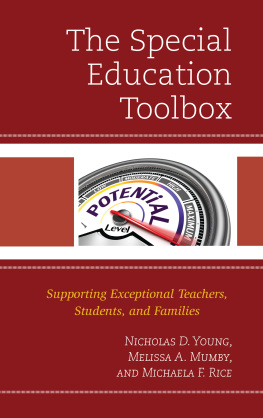
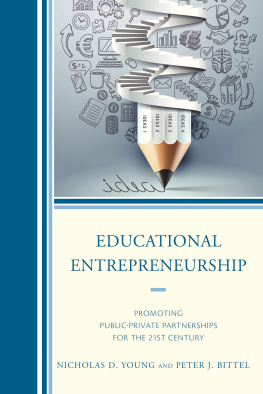
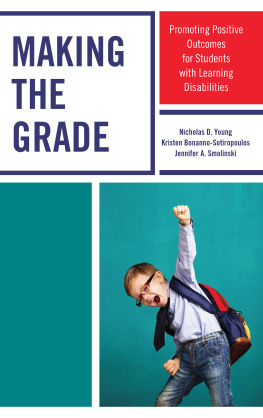

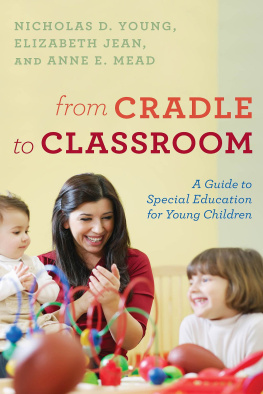
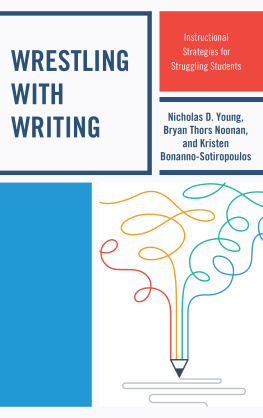


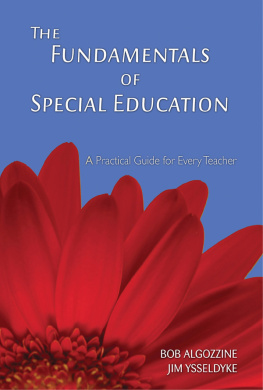
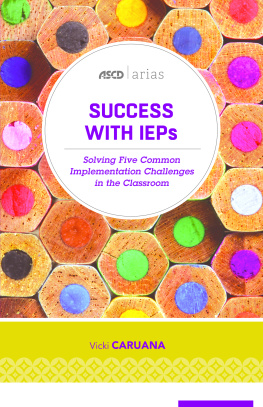
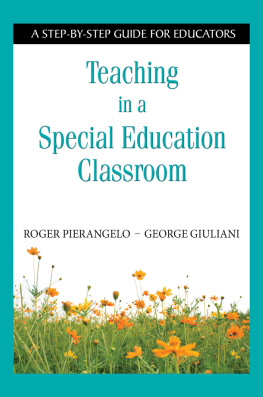
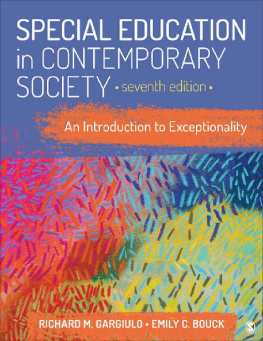

 TM The paper used in this publication meets the minimum requirements of American National Standard for Information Sciences Permanence of Paper for Printed Library Materials, ANSI/NISO Z39.48-1992.
TM The paper used in this publication meets the minimum requirements of American National Standard for Information Sciences Permanence of Paper for Printed Library Materials, ANSI/NISO Z39.48-1992.